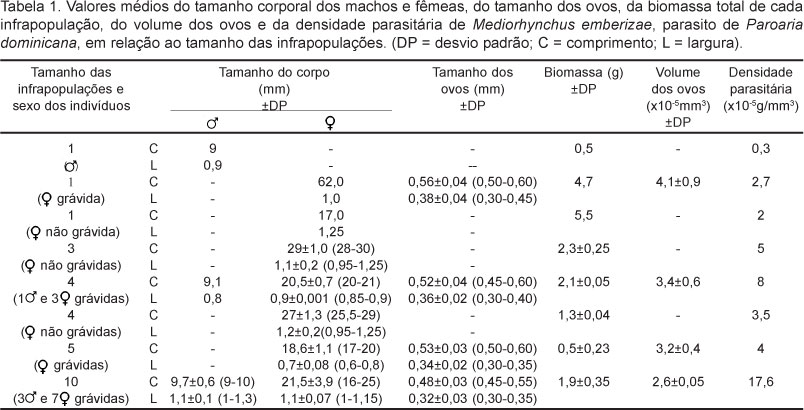During the study of the metazoan parasites of Paroaria dominicana (Linnaeus, 1758), eight infrapopulations of Mediorhynchus emberizae (Rudolphi, 1819), were collected in the medium third of the small intestine, with parasite intensities ranging from one to ten specimens. Differences among the average values of the biomass, volume of the eggs, volume of the testicles and the parasite density of the infrapopulations were statistically tested in order to detect variations of these parameters in function of parasite density. Was observed that the acanthocephalans biomass increased with the volume of the intestine and also that the parasite density increased with the parasite intensity in the infrapopulations. It was verified that the increase of the parasite intensity was accompanied by the decrease of the mean biomass of the parasites. Decrease of the volume of the eggs was verified with the increase of the density and of the parasite intensity. The results of the present work could suggested the occurrence of density-dependent factors and the decrease of testicles volume and the biomass of the males with the increase of the parasite density in the infrapopulations of M. emberizae in the intestine of P dominicana.
Red-cowled cardinals; acanthocephalans; biomass; Brazil


